By now, you may have read some of my articles on Anavil cuisine and tried some of my mom’s recipes on Sheetal’s blog. This time, we want to share a very unique and delicious kadhi with you.
Though kadhi is a much loved Gujarati preparation, I personally share a love-hate relationship with it. I don’t care for the typical kadhi so you will rarely find it on my plate. But growing up in an Anavil Brahmin household with a very talented cook as my mom, I was spoiled with the many varieties of Anavil kadhis she made.
We wrote about one a few months ago. Today let me share another one of my favorites with you, a winter classic in Anavil homes. The centerpiece of this kadhi is an umami bomb created by a masala from many fresh winter vegetables abundant in south Gujarat: lilva (fresh tuvar dana), amba, haldar, leela dhana, adu marcha, and of course our utmost favorite leelu lassan.
While dried tuvar is eaten all over India in dals, rasams, and sambhars, leeli tuvar or lilva as we call it in South Gujarat is a staple ingredient in pulao or shaak (by itself or with ringan), and in farsans such as kachoris or Anavil dhekras during winters. Tuvar (pigeon peas) was domesticated in India over 3500 years ago and traveled from there to East and West Africa. Prized for its high levels of protein and the important amino acids, methionine, lysine, and tryptophan, it has since become a staple in other parts of the world including Latin America and South Asia.
The other key element of this umami bomb is amba haldar. Fresh turmeric (haldar) and its close cousin mango ginger (amba) are a marriage made in heaven and an instant pickle with the two combined with lemon and salt can be found on most gujarati thalis throughout winter. Both amba, which looks like ginger but tastes like raw mango, and haldar, its look-alike rhizome with a bright orange color, have antioxidant, antibacterial, antifungal, and anti-inflammatory benefits.
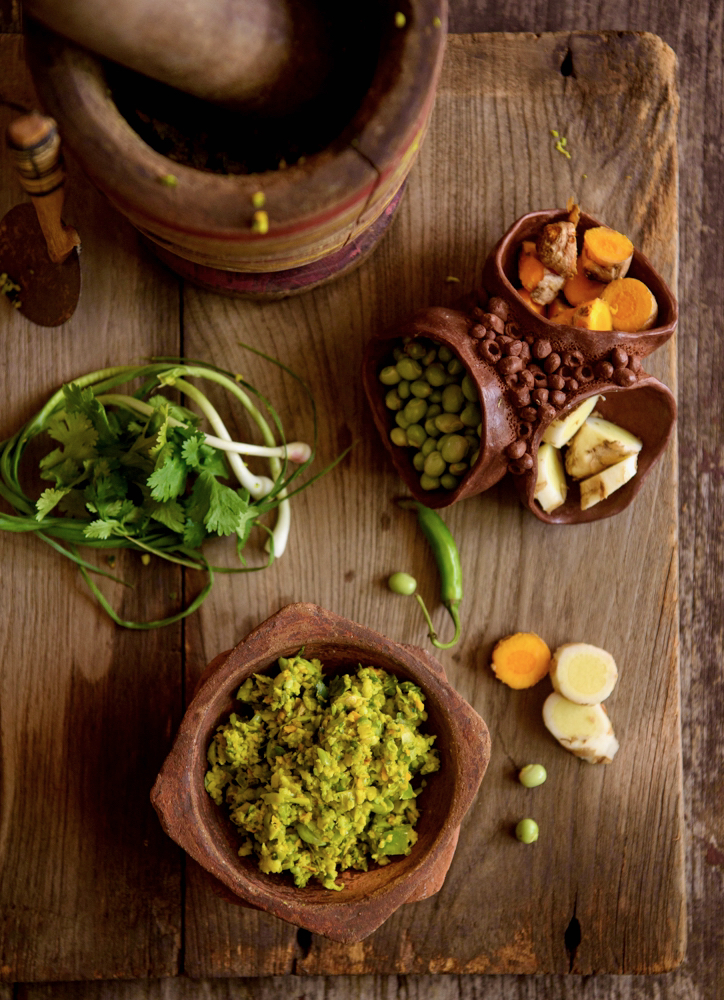
Lastly, leela dhana (fresh coriander leaves) and my favoritest leelu lassan round out this kadhi masala. Leelu lassan or young fresh shoots of garlic are harvested before the garlic pods mature. Its heady aroma fills the air in vegetable markets throughout winter and you will find it in the food of various south Gujarati communities including Parsis, Surti Patels, and Anavils. It makes Anavil food distinct from other Gujarati micro cuisines and is a staple in our winter preparations such as undhiyu, wagharelo rotlo, leela lassan ni chutney and bharela shaak.
Though limdo (curry leaves) are ubiquitous in other kadhis, my mom skips it in this one to let the flavors and textures of the other ingredients shine through. But others, such as my aunt Malvikafoi put limdo but not leelu lassan in her kadhi masala, while aunt Shaktikaki includes both. She also likes to put leela dhana separately into the kadhi in the end. While this kadhi mainly consists of fresh herbs, Malvikafoi likes to add shekelu jeeru (roasted and ground cumin) in hers, and Shaktikaki puts taj (cinnamon) & laving (cloves). Every Anavil cook will have their own touch to this recipe, based on their personal tastes and preferences. When these vegetables are fresh in season, all three of them will make the green kadhi masala & freeze as ice cubes so we can enjoy the delicious flavors of this kadhi even after winter is long gone.
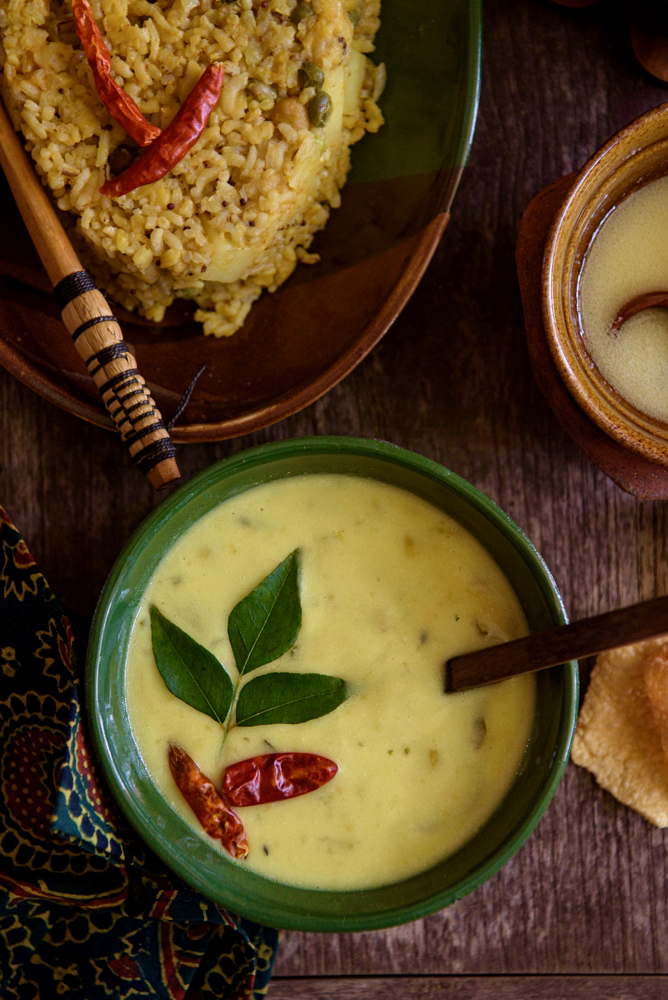
Similar to mirepoix in French, sofrito in Spanish, or the holy trinity which is the flavor base of Cajun cuisine, these types of green masalas are the foundation of Anavil food. The fertile plains of south Gujarat are lush in winter with a wide variety of green vegetables; a stark contrast to the more desert-like Kathiawar region, which has to rely on dry spices to flavor their food. Open a fridge in an Anavil kitchen and you will always find adu marcha paste, vatelu (ground) lassan, and chopped green coriander ready to be popped into food being cooked that day. In the peak of winter, leelu lassan and fresh methi leaves also show up in most of our food.
Without further ado, let us present the recipe built, tested, tasted, and photographed by Sheetal with my mother’s guidance, to you. This versatile kadhi can be paired with almost anything Gujarati. Sheetal made it with masala khichdi but I also like it with plain rice and mori dal (plain tur dal). My mom likes it with rotli, bhaat and typical Anavil winter vegetables such as panch kutiyu shaak or methi na muthiya ane surti papdi nu shaak. And Shaktikaki likes it with oro (ringan bhartu) and bajri rotlo or with plain khichdi. Hope you make it and enjoy it as part of your Gujarati thali too.
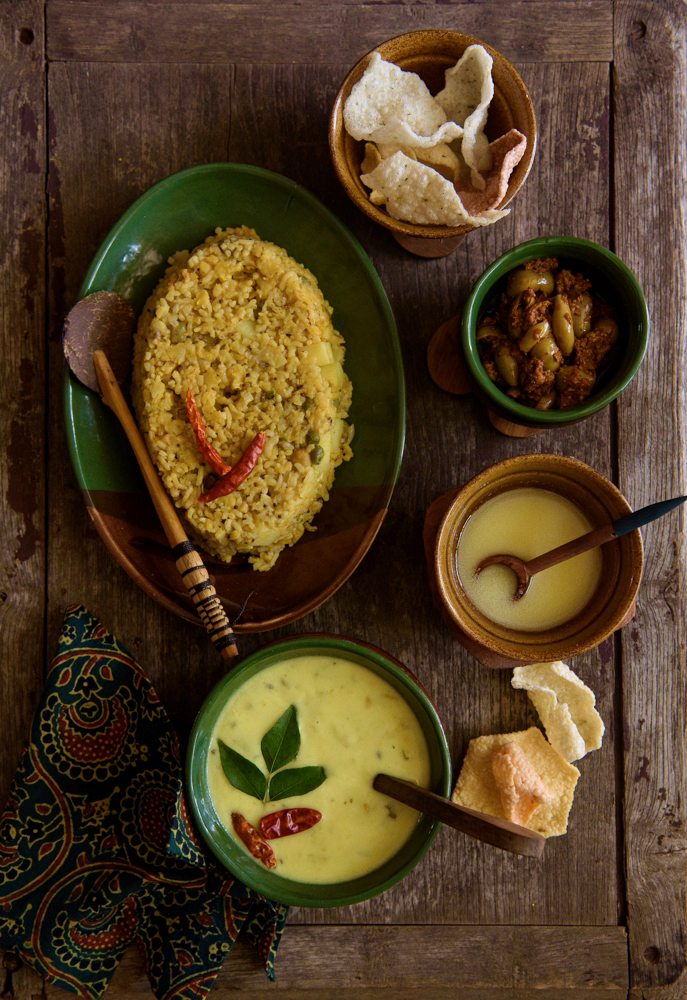
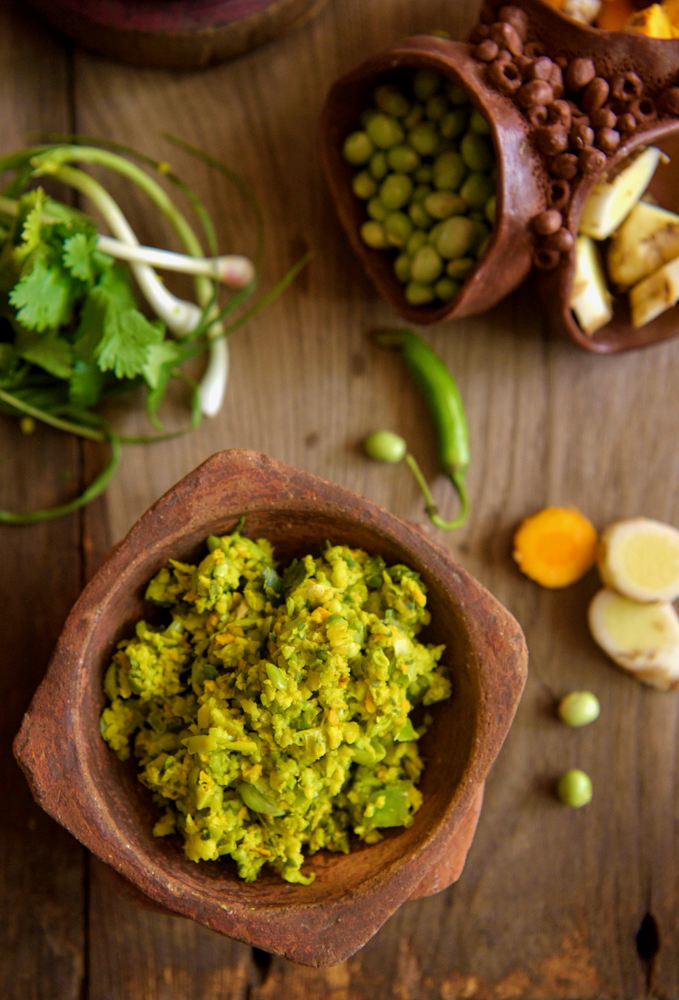
Kadhi no Masalo
Ingredients
- 1/3 cup fresh pigeon peas/tuver na Lilva
- 1/4 cup chopped green garlic/ young garlic/lilu lasan
- 2 inch mango ginger/aamba haldar
- 1/2 inch fresh turmeric root/haldar
- 1 inch ginger
- 2-3 green chillies (more or less to your liking)
- 1/4 cup fresh coriander
- pinch of salt
Instructions
Wash and drain the mentioned ingredients.
Roughly chop the aamba haldar, haldar, ginger, green chillies, lilu lasan and fresh coriander
After you have prepared the ingredients, pound them in mortar of pestle or coarsely grind them into a chutney grinder.
Remember to not make a paste, you want it to be chunky and coarse to be able to enjoy some bite while sipping warm kadhi.
Once the masala is ready, add it to the simmering Kadhi (before you have tempered the kadhi) and continue to simmer and temper as you would, until the kadhi has boiled enough and the tuver lilva have cooked. It doesn't take long.


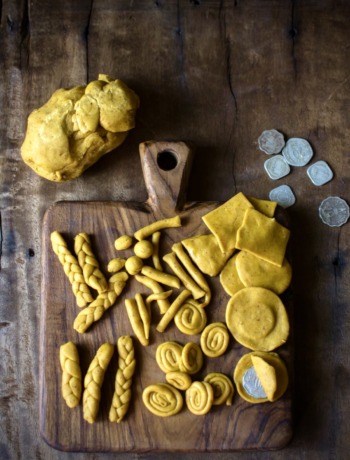
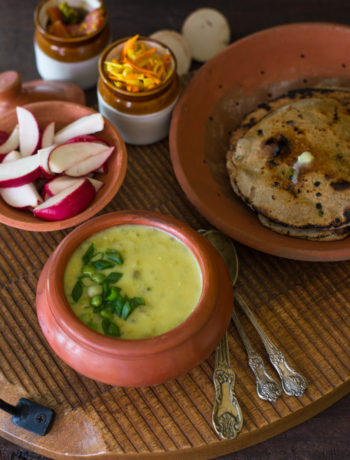
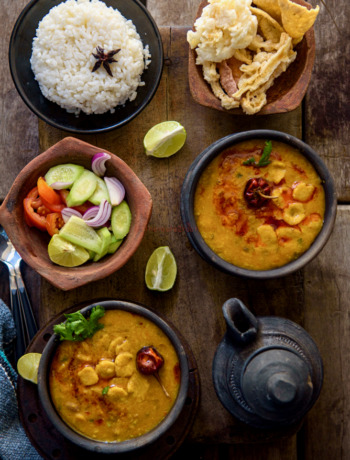
No Comments